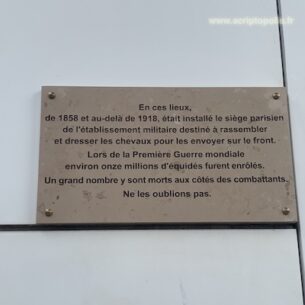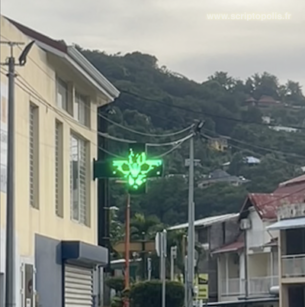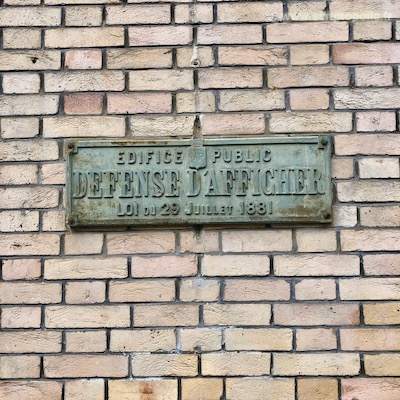Defending
Paris, december 2019.
If many writings circulate from one place to another, they are also displayed to be seen or read in situations. This is all the more obvious for shop signs, labels, and signboards, which much of their action stands in the precise location they rest. What they state, designate or represent takes a very special meaning. This strength of inscriptions sometimes also makes them vulnerable. To ensure that the Act of 29 July 1881 on freedom of the press, which prohibits any posting outside reserved areas, is enforced, it is important to recall it. How to let people know that it is forbidden to post, not in a general manner in the public space, but in each particular situation? Placarding on this wall the reminder of the law would be totally orthogonal to what it reads. That would be doing exactly what it prohibits! The problem can be circumvented using other inscription technologies. For a long time, this ban appeared in black-painted letters on some public buildings. But each inscription comes with its ecology: since the introduction of spray paint and the proliferation of graffiti on facades, painting the ban has been less and less common. This gesture could easily turn into an incentive for graphic debauchery. Or, conversely, the huge means now put in place to fight this proliferation are a regular reminder of the extent to which illegal posting and inscriptions are not allowed. It is therefore useless to write it on the walls Vestige of another era, this bronze plaque still discreetly and effectively does its job though: to defend this building against any scriptural invasion.







